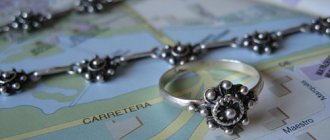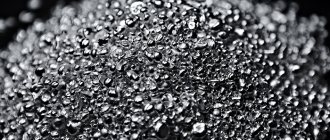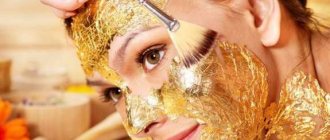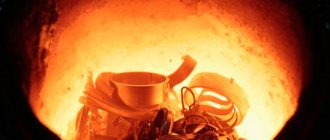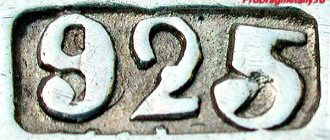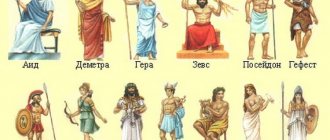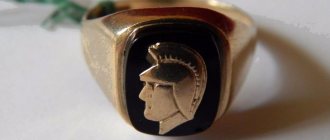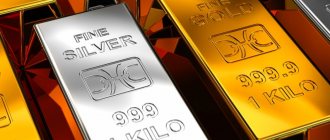Gold is one of the popular precious materials. This metal is mined in different countries. And depending on the place of origin, the metal has individual characteristics. For example, gold obtained in Turkey is always sold at a lower price than its analogues. What are the characteristics of Turkish precious metal and why is its price lower than gold mined in other countries of the world?
Turkish gold
Instead of introducing
There are a huge number of jewelry outlets in Turkey, from small shops to large premium stores. For those who have been to Istanbul, it is enough to simply remember the so-called Kapaly Charshi or Covered Market. This is where your eyes will run in different directions, then collect them in opposite corners of the vast territory.
There are a couple of things here that I want to draw the reader's attention to.
Firstly, purely and personally, as a person who is not very well versed in “gold and stones,” I prefer reputable brands. This is where, in fact, the idea was born to compile the list below, because there, at least, you can rest assured about the quality of the products.
“Secondly” will concern prices. This is more difficult, because the price on the label of a ring in Turkey and the selling price for it can differ significantly.
How much? - Just one phrase from the series “I’m from Ahmet Bey - your neighbor, he highly recommended you and conveyed you big and fiery with a tassel.”
Türkiye is a country of personal connections and personal recommendations. Having them, you can achieve conditions for yourself that are significantly better than standard ones. Plus, again, personal charm, like the cat Behemoth. If you have neither one nor the other, please join the general queue. A simple conclusion follows from this: any Turk, before every (!) expensive and even not so expensive purchase, will look for a “familiar and reliable” seller.
Turkish gold
Until the recent complications of the political situation, Turkey was one of the most popular destinations among our tourists, and, most likely, it will remain so. As soon as the tension subsides, the tourist flow will again go to the Turkish shores for the sun, sea and shopping. Turkey is famous not only for hookahs, carpets and oriental sweets, but also for leather goods and gold. “Turkish Gold” has become a unique and very controversial brand in jewelry.
Despite the fact that Turkey has its own gold deposits, mining enterprises are developing and in general it has a good gold reserve - Turkish jewelers work mainly with imported alloys, which they melt using their own methods. The result of this work calls into question the quality of “Turkish gold”, and sometimes the very fact of its existence. There are serious jewelry stores that work with European representatives, value their reputation and provide certificates for each product, but they are located far from resort areas and the prices there are much higher. But small jewelry stores on the coasts, as well as local bazaars offering to buy gold chains wound on bobbins by the meter, can sell anything under the guise of gold. In this case, it is impossible to find out the exact composition of the alloy, which means there is no guarantee that the product will not fall apart or lose its appearance after the first wear, and also that it will not cause skin irritation. The test mark on Turkish products does not guarantee anything.
The ligature of the precious jewelry alloy includes, in addition to gold, silver, palladium and copper. Turkish jewelers in most cases replace palladium with nickel, but this option at least contains precious metals. Very often, products made from tombac - an alloy of copper and zinc, high-quality brass with a high copper content - are sold under the guise of gold. It looks like gold - remember the color of wind musical instruments, they are also made from tombak. Such jewelry quickly breaks down, and domestic jewelers are unlikely to repair them. They also give out for gold:
- high zinc brass
- aufir (aluminum bronze)
- goldin (aluminum copper)
- butt bronze (bronze with tin)
- vermeil (gilded silver)
- durametal (copper, zinc, aluminum) and some other alloys of non-ferrous metals.
The purity of Turkish gold differs from Russian standards. It is indicated in carats and the most common ones are from 9 to 14K, they correspond to our 375, 500, 583 and 585 samples. The highest carat standard is 24K, which is equivalent to 999. Products made from high-quality Turkish gold have a bright yellow color because silver is added to the alloy. A red tint indicates that the alloy contains a high percentage of copper. Such gold cannot have a high standard, despite the assurances of the seller and the presence of a hallmark on the product - in Turkey, the hallmarks are placed by the manufacturers themselves, and no one controls their compliance with the alloy. Therefore, having given a Turkish purchase to a Russian appraiser, you can hear a disappointing verdict - there is much less gold in the jewelry or there is no gold at all. This should be taken into account by those who plan to make an investment with such a purchase or resell the product in the future, since selling gold with a false hallmark is almost impossible, and even dishonest.
This mainly applies to small jewelry shops and market stalls, however, you also need to be on your guard in reputable stores. If the sample is blurry, unclear or does not meet the standards, it cannot be trusted even there. If the product consists of several parts - for example, earrings - then the hallmark must be on each, otherwise it may turn out that only the earring is made of gold. You need to inspect all the fasteners very carefully - how carefully they are made, whether they work well, whether there are scratches or nicks, whether the metal changes color on the bends. Gold should not be magnetic, and if it is scratched, a different color should not appear under the coating. There are several other chemical methods of testing - iodine, lapis pencil or assay acid, but sellers are unlikely to allow this. In serious jewelry boutiques, all products are accompanied by a certificate - it must be carefully studied, because it may turn out that it is officially written there that gold is only the top coating, and the seller deliberately avoided this point.
With all this, it cannot be said that it is better not to buy gold in Turkey at all. Turkish jewelers make very exquisite jewelry; they have rich imagination and exclusive designs. You just shouldn’t count on the fact that buying gold cheaply in Turkey is an economical investment, and the purchase should be treated as jewelry that is simply pleasing to the eye.
Altınbaş (Altynbash)
History: The company was founded in Gaziantep in 1975 and has now grown into a giant in the Turkish jewelry industry. The company's factory, located in Istanbul, is the largest in the country. According to Ekovitrin , the company is one of the 27 Turkish “super brands”.
Stores: Throughout the country, including Antalya, as well as outside it (Albania, Bulgaria, Qatar, Northern Cyprus, Macedonia), however, they are not listed in Russia.
Features: A full range of products for women and, in addition, the assortment also includes products for men (watches, bracelets, rings and rosaries - in addition to standard “banding” products for the strong half of humanity). We don’t say standard words like “the company keeps up with the times” and “everything is for the client,” and that’s understandable.
Price range: I will say just once - prices for jewelry, for obvious reasons, fluctuate very much. And the presence of a huge assortment makes it very difficult to single out “core products” in order to give a price for it. So, just contact us if you are interested in anything specific.
About the cost
Reviews from tourists who have visited Turkey claim that you should not buy jewelry in this country. Even if you visit a large store where sellers can provide the client with all the necessary documentation for the product, you cannot be sure of the high quality of the jewelry. As for the price, the cheapest jewelry can be purchased for $40 to $70 per gram. But the quality will be very low. Another point that domestic tourists need to know about. The same product can be sold at different prices in large and small cities in Turkey.
For example, a gold chain in one of the jewelry boutiques in the city of Kemer will cost $500, and in a small town – $200-300. In Russia, the same chain made of Turkish gold will already be sold at a price of $600. But let's not forget about quality. The purity of Turkish gold is so low that it makes no sense to buy such products.
Assos (Assos)
History: The company, created in 1998, spun off into a separate brand from the Altynbash mentioned above.
Stores: A not very extensive network of stores within the country, consisting of several points in Istanbul and Antalya, and abroad, including Kazakhstan, Germany, Holland and Egypt.
Features: The slogan sounds almost like “May the force be with you!”, and the bet is on diamonds and diamonds, more than on other “stones”. The company also raises the slogan about the synthesis of “East and West” in each individual product.
Atasay (Atasay)
History: The company, which takes its roots from the city of Denizli, turned exactly 80 years old in 2021 and since then, perhaps, there is not a single industry award or award that it has not received.
Stores: Throughout the country, including Antalya, as well as outside it, including Cyprus, Iraq, UAE.
Features: Under the umbrella of the main brand, a lush bouquet of subsidiary brands has blossomed, including, for example, Asgold ( Asgold ) or here’s another - Kidsy Atasay ( Kidsy Atasay ), intended for the smallest lovers of precious metals . In addition, the company works literally in the Stakhanov style, releasing every year two new main and additional collections of its products.
. In addition, the company works literally in the Stakhanov style, releasing every year two new main and additional collections of its products.
Cetaş (Jetash)
History: This Istanbul company was established in 1974.
Stores: About a hundred stores throughout the country, including Antalya, but they are not yet represented abroad.
Features: As their “chips” they themselves designate cubes with letters a la Pandora and the well-known blue eye from the evil eye “nazar boncuk” (pronounced “nazar boncuk”). However, regarding the latter, it should be noted that blue eyes are an indispensable attribute of almost any Turkish jewelry brand. In addition, the company itself, not without pride, says about its products that they are so chic that they can be copied, leading competitors into unnecessary temptation...
However, regarding the latter, it should be noted that blue eyes are an indispensable attribute of almost any Turkish jewelry brand. In addition, the company itself, not without pride, says about its products that they are so chic that they can be copied, leading competitors into unnecessary temptation...
Ekol (Ekol)
History: The company began its history in 1969 in the city of Eregli on the Black Sea coast of Turkey.
Stores: Large distribution network throughout the country (about 1,500 points), but they still have 5 of their own stores and all of them are located in Istanbul. However, products are also supplied abroad - to 13 countries.
Features: In addition to “standard” rough and polished diamonds, the company’s special collection for the smallest “oligarchs” is noteworthy.
QUESTION FOR RELEASE: WHO INVENTED THE FAMOUS ALL INCLUSIVE SYSTEM?
Hint: he is Turkish. But still no one has answered
If you are the only one or the only one who knows, write to the author of the site, he is eager to meet you.
If not, just read the article about this Great Man and his Fate at the link.
Favori
History: The company, founded relatively recently by industry standards - in 1992, took a sharp start and is establishing its presence among the industry leaders. And so much so that they opened their own “Golden Academy” - a talent forge.
Stores: Large distribution network throughout the country (about 2000 points), as well as foreign representative offices in Azerbaijan, Cyprus, Germany, Kazakhstan and Turkmenistan.
Features: The company's main feature is 14-karat gold products, which are exported to 45 countries, largely to the USA and Europe. 95% of the products sold by Favorites are of their own production, of course, according to all European and local standards. Almost 6 thousand (!) new types of products are produced annually. The remaining 5% comes from specially selected Italian producers. Well, the Turks love everything Italian, what can you do? Not only them, by the way
95% of the products sold by Favorites are of their own production, of course, according to all European and local standards. Almost 6 thousand (!) new types of products are produced annually. The remaining 5% comes from specially selected Italian producers. Well, the Turks love everything Italian, what can you do? Not only them, by the way
Main differences
Domestic buyers, once in a Turkish jewelry store, often ask the question, what is the purity of Turkish gold? Please note that you will not find the usual three numbers indicating the purity of the metal. Turkish jewelry masters use a different notation system - carat. According to this system, 585 gold is designated as 14 carats. But don't rush to make a purchase. Even if 24 carats is indicated on the ring, this does not mean that the product is made of metal of the highest 999 standard. Often, 24 carat jewelry looks very dubious, as we see in the photo.
Necklace
Studying the catalog of Turkish gold products, domestic buyers note low prices for the goods. Don't rush to make a purchase. Turkish jewelry contains a large number of impurities that negatively affect human health.
In Russian stores, for each piece of jewelry, the seller has a number of documents that confirm:
- The exact area of precious metal mining.
- Guarantee of the marking indicated on the product.
- No harmful impurities in the composition.
Turkish jewelry sellers do not have such documentation.
Gold necklace
Jival
History: If we talked about the previous company as a young one, then the next one is in its infancy, having been founded only in 2006.
Stores: Large distribution network throughout the country (about 1,500 points), but there is still silence about foreign representative offices.
Features: Initially specializing in products made from 14-karat gold, the company is increasingly asserting itself in the diamond segment.
What is the difference?
Turkish gold differs from Russian gold for several reasons:
- In our country, metal is mined independently.
- There is no gold in Turkey; jewelers sell imported metal.
- Metal samples in Russia are established by GOST.
- In Turkey, there are different tests for jewelry.
On the territory of our country they sell raw materials that are mined in Russia. When buying jewelry and studying its sample, you can understand what the jewelry is made of and how much gold and impurities it contains. The 585 grade metal contains 41.5% impurities.
Gold is not mined in Turkey; jewelry is made from metal that is exported by other countries: Germany and the USA. The hallmarks are set in accordance with the presence of gold in the carriages, for example, the “14 K” hallmark corresponds to our 585. But some craftsmen from Turkey can change the marking and put a different hallmark on a product that is not of high quality.
Indeed, in Turkey you can buy jewelry that is distinguished by oriental design and looks attractive, but it is not a fact that this product is related to jewelry.
Jewelers often offer low-grade items for sale by adding nickel instead of palladium to the ligature - this helps reduce the cost of the jewelry several times.
Turkish gold bracelets
Nickel gives the jewelry its familiar white color. Everyone knows that white gold is made with the addition of platinum, but jewelers replace platinum with nickel. As a result, a product of the desired shade is obtained, but its cost is much lower.
The disadvantage of this alloy is that nickel quickly oxidizes, is susceptible to corrosion and can cause allergies.
Kaff (Kaff)
History: The company has existed since 1965 and from the very beginning it specialized in the diamond segment.
Shops: There are many Kaffa shops in Ankara and very few outside it: one point on the pearl of the Aegean Sea - in Bodrum.
Features: As is clear, there are not many Kaffa stores, but all of them are in vests. In the sense that they position themselves as boutiques with piece goods and entirely handmade. Another distinctive feature is their distribution of very specific foreign brands. In general, count the money “everyone who enters there”
In the sense that they position themselves as boutiques with piece goods and entirely handmade. Another distinctive feature is their distribution of very specific foreign brands. In general, count the money “everyone who enters there”
Flaws
Turkish gold, which is of low quality, can:
- cause an allergic reaction;
- oxidize, lose shine and color during wear;
- turn out to be not in fact an alloy of gold, copper and silver.
Too red a tint to the jewelry should alert the buyer. Copper gives the ligature its red color. It quickly oxidizes when in contact with air and water, so during wear, gray and dark spots will appear on the surface of the product.
Nickel, iron and other base metals that can be added to the alloy can cause an allergic reaction in the buyer in the form of itching of the skin.
Display case of gold rings in Turkey
In addition, Turkish jewelers love to combine metals; they make part of a chain or ring from gold, then use copper and silver, covering parts of the jewelry with gold.
Common alloys:
- Gold is mixed with silver, the ligature is called “Electron”.
- Aluminum is mixed with copper, the ligature is called “Goldin”.
- Iron, nickel and chromium - the alloy is called "Belgica".
- Platinum with a large number of impurities is called “Goldin”.
Products made from the above alloys can be sold as jewelry. In addition, the Turks like to pass off gilded silver as pure gold. When buying, you can try to scratch the jewelry - the seller’s reaction will be eloquent.
But it is worth remembering that Turkish gold is not 100% fake; sometimes only an expert can distinguish jewelry from a fake.
Minyon
History: This is in the full sense of the word, because it was founded in Ankara in 1970.
Stores: However, that’s why it’s a “thing”, that there can’t be too many of it - there are two Minions in Ankara and one in New York. This is a kind of knight's move on the part of the assertive Turkish business. And, really, why waste time on trifles...
Features: Compared to other stores, Minion has a greater emphasis on “colored stones” rather than diamonds.


